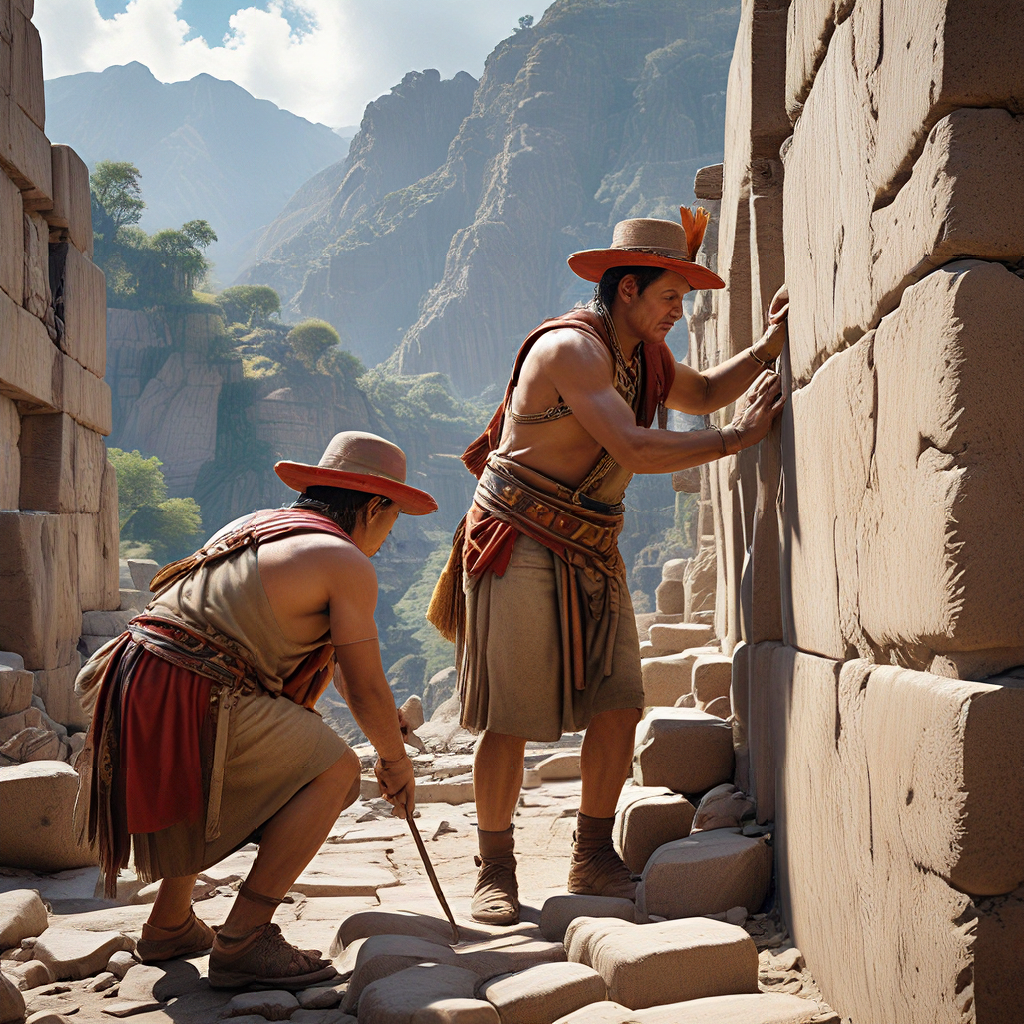The Myth of the Incan Stone Masons: Builders of Sacred Temples
Introduction: Unveiling the Enigma of Incan Architecture
The Incan Empire, a civilization that flourished in the Andes Mountains of South America, left behind a legacy of architectural marvels that continue to captivate and puzzle historians and archaeologists today. Their intricate stone structures, characterized by their precise fit and colossal dimensions, stand as a testament to their ingenuity and mastery of construction. But the methods by which they accomplished these feats have remained shrouded in mystery, fuelling speculation and debate for centuries. The enigma of Incan architecture lies at the heart of a captivating myth – the myth of the Incan stone masons.
The Lost Knowledge: The Mythical Origins of Incan Masonry
The Incan empire, at its peak, controlled a vast territory stretching from modern-day Ecuador to Chile. Their mastery of engineering and architecture is evident in their impressive road networks, irrigation systems, and towering temples. The most renowned of these structures include the fortress of Sacsayhuamán, the Temple of the Sun in Cusco, and the enigmatic Puma Punku complex. The intricate carvings, precise angles, and colossal size of these structures have led to widespread speculation about the methods employed by the Incan builders.
The Impossibility of Primitive Tools: Challenging Conventional Theories
Traditional theories about Incan construction rely on the assumption that they used rudimentary tools, such as copper chisels, wooden mallets, and sand as an abrasive. However, this explanation fails to account for the incredible precision and accuracy evident in the stonework. The fit of some of the stones is so perfect that a single sheet of paper cannot be inserted between them. This level of craftsmanship suggests a level of technological sophistication that surpasses what is conventionally attributed to the Incas.
The Perfect Fit: Precision and Accuracy Beyond Modern Understanding
The most striking feature of Incan architecture is the near-perfect fit of the stones. Many of their structures were built with massive blocks of stone, weighing several tons, that were meticulously fitted together without the use of mortar. The smooth surfaces of the stones, the intricate carvings, and the remarkable precision with which they were joined have led some to believe that the Incas possessed a level of technological knowledge that has been lost to history.
The Mystery of the Giant Stones: Beyond Human Capacity?
The immense size of some of the stones used in Incan structures further fuels speculation about their methods. For example, at the fortress of Sacsayhuamán, some of the stones weigh upwards of 200 tons. The sheer weight and size of these stones, coupled with their intricate carvings and precise placement, have led some to question whether the Incas could have moved and positioned them using only primitive tools and manpower. The sheer scale of these structures and the accuracy of their construction have given rise to the question: How did the Incas achieve such impressive feats?
The Theory of Advanced Technology: A Controversial Explanation
The mystery surrounding Incan construction techniques has prompted some to propose that they possessed a level of technological advancement beyond what is commonly believed. Some theories suggest that the Incas may have had access to advanced tools, materials, or knowledge that allowed them to manipulate and move massive stones with ease. These theories, while controversial, are fueled by the seemingly impossible feats of engineering and precision evident in their structures.
One possibility is that the Incas had a deeper understanding of physics and engineering than previously thought. Perhaps they employed methods of manipulating gravity or leverage that are not fully understood today. Another possibility is that they used advanced tools, such as complex pulley systems or hydraulic presses, to move and manipulate the massive stones. However, there is no concrete archaeological evidence to support these theories, leaving them in the realm of speculation.
The Role of the “Puma Punku” Complex: A Site of Unexplained Construction
The Puma Punku complex, located near Lake Titicaca in Bolivia, stands as a testament to the enigmatic nature of Incan construction. This complex features intricately carved and precisely fitted stones, some weighing hundreds of tons, that exhibit an astonishing level of precision. The stones are cut with such accuracy that they fit together seamlessly, without the need for mortar or any visible seams. The sheer scale and complexity of Puma Punku, coupled with the lack of readily available quarry materials in the area, has led some to believe that the Incas employed methods that are beyond our current understanding.
Puma Punku is a site of intense debate among archaeologists and historians. Some believe it was a ceremonial center built for religious and astronomical purposes. Others argue that it was an administrative center for the Incan empire. Regardless of its precise purpose, Puma Punku serves as a compelling example of the enduring mysteries surrounding Incan construction techniques.
The Alien Intervention Hypothesis: An Extraterrestrial Explanation
For some, the seemingly impossible feats of Incan engineering have led to even more outlandish theories, including those involving extraterrestrial intervention. Proponents of this hypothesis suggest that the Incas may have received assistance from advanced alien civilizations, who provided them with the technology and knowledge necessary to construct their monumental structures. They point to the precision and complexity of the stonework, the seemingly impossible feats of moving and fitting massive stones, and the lack of any plausible explanation within the context of known ancient technologies.
While the alien intervention hypothesis remains a fringe theory, it serves as a testament to the enduring fascination with the Incan empire and its architectural marvels. It highlights the desire to find explanations for seemingly impossible feats, even if they push the boundaries of conventional understanding.
The Need for Further Research: Unraveling the Secrets of the Incan Past
The enduring mystery surrounding Incan construction techniques underscores the importance of continued research and exploration. Future archaeological investigations and technological advancements may shed new light on the methods employed by the Incas. However, even in the absence of definitive answers, the enigma of Incan architecture serves as a reminder of the enduring power of human creativity and innovation, even in the face of seemingly insurmountable challenges.
The Incan Empire's legacy lives on not only in its magnificent structures, but also in the mysteries that continue to surround them. The Incan stone masons, shrouded in myth and speculation, remain a testament to the enduring power of human ingenuity and the boundless potential of the human spirit.
FAQ
Q: What are some of the most famous Incan structures?
A: Some of the most famous Incan structures include the fortress of Sacsayhuamán, the Temple of the Sun in Cusco, and the Puma Punku complex.
Q: How did the Incas move such large stones?
A: There is no definitive answer to this question. Traditional theories suggest the use of primitive tools, but the precision and scale of the structures have led to speculation about the use of advanced technologies or even extraterrestrial intervention.
Q: Why is the Puma Punku complex so important?
A: The Puma Punku complex is a site of intense debate and speculation due to the extraordinary precision and complexity of its stonework. The sheer scale and complexity of the site, coupled with the lack of readily available quarry materials, have led to numerous theories about its construction.
Q: Are any of the theories about Incan construction techniques proven?
A: No, none of the theories about Incan construction techniques are definitively proven. The lack of concrete evidence leaves the methods employed by the Incas shrouded in mystery.
Q: What is the significance of the Incan stone masons?
A: The Incan stone masons represent the enduring mystery and fascination surrounding ancient civilizations and their architectural achievements. They serve as a reminder of the ingenuity and creativity of human beings, even in the face of seemingly insurmountable challenges.



